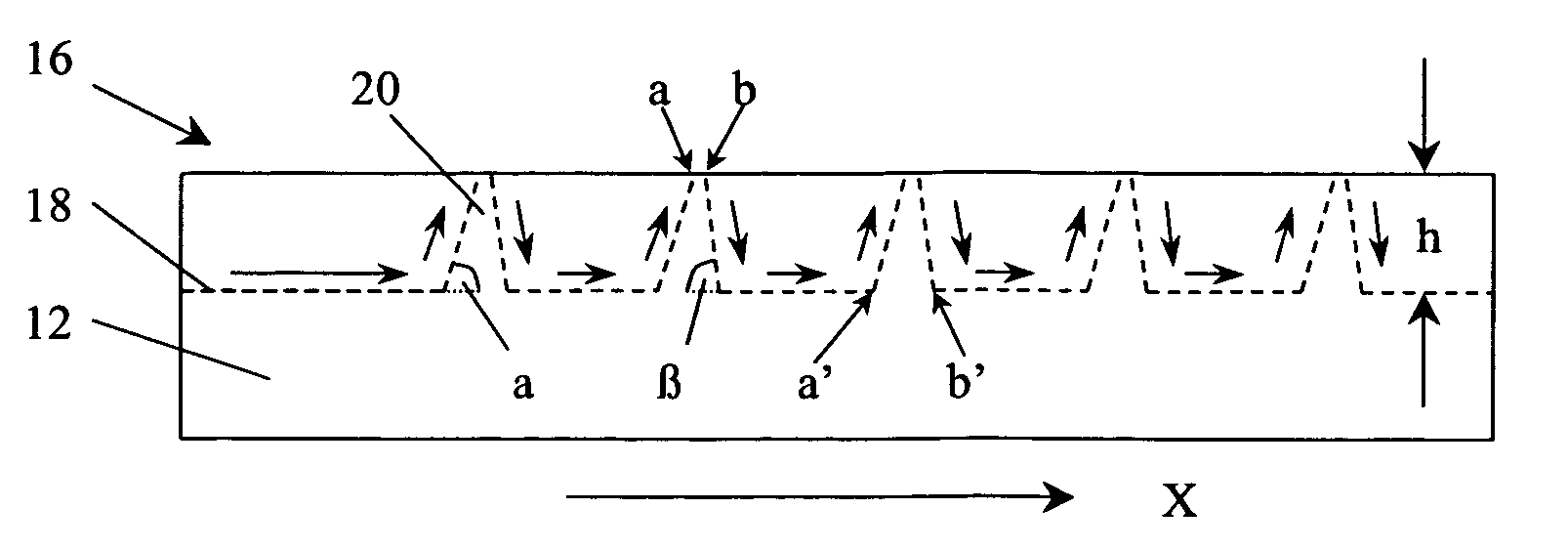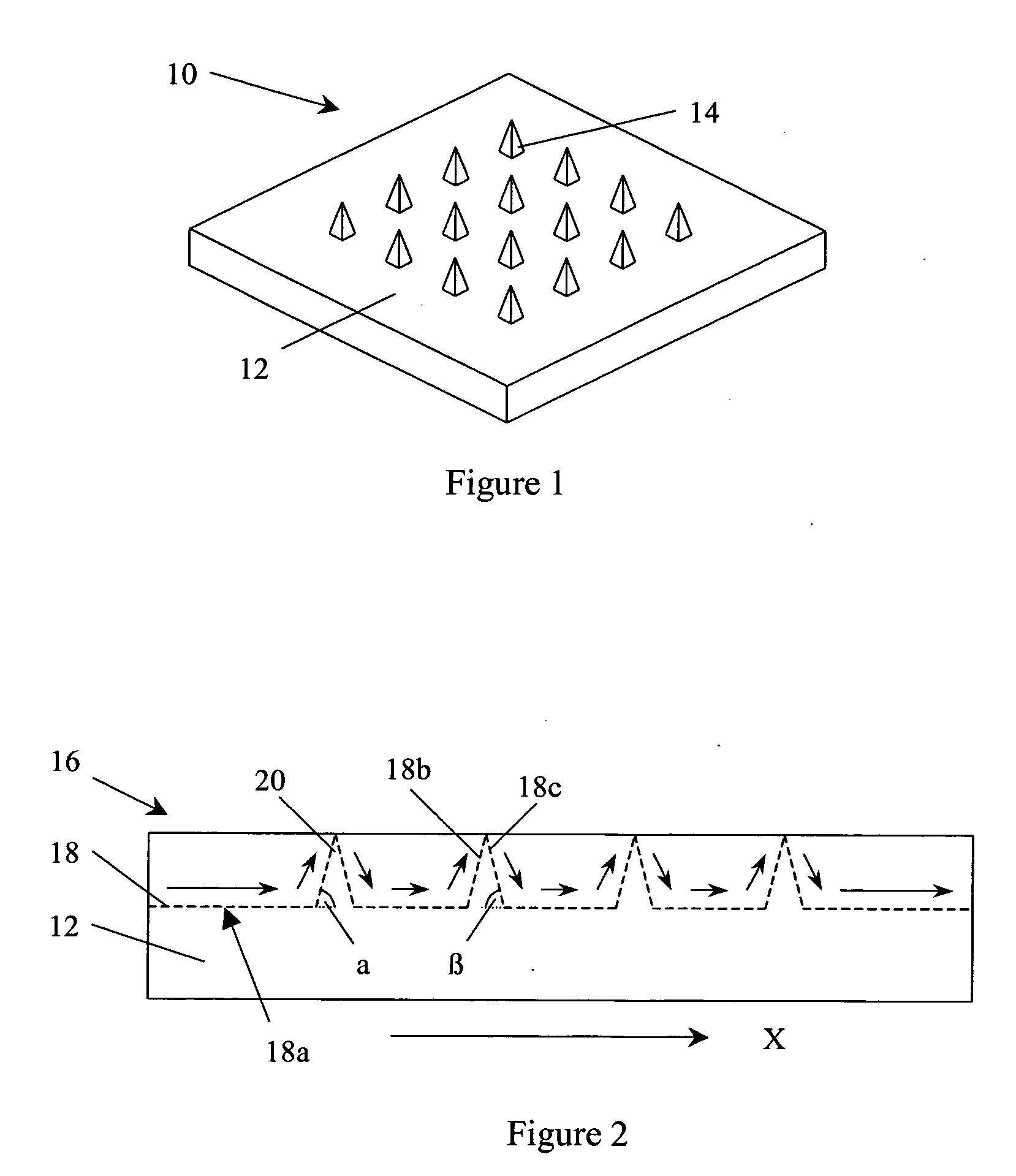Microneedles and microneedle fabrication
a technology of microneedles and microneedles, which is applied in the field of microneedles, can solve the problems of microneedles that are too soft (made of polymeric materials), too brittle (made of silicon), or are too expensive, and can be too unreliabl
- Summary
- Abstract
- Description
- Claims
- Application Information
AI Technical Summary
Benefits of technology
Problems solved by technology
Method used
Image
Examples
Embodiment Construction
[0043] In the drawings, like numerals on different Figures are used to indicate like elements throughout.
[0044] A method of fabricating microneedles as described herein typically involves three main steps:
[0045] (i) making a master mould;
[0046] (ii) making a secondary mould; and
[0047] (iii) forming the microneedles.
(i) Making a Master Mould
[0048] A master mould 10 according to a first embodiment of the invention is shown in FIG. 1. The master mould 10 has a generally parallelepiped base 12 from which extend an array of master mould needles 14 from one face. For simplicity only a single master mould needle array is shown in the Figures although fabrication would normally involve an array of many such arrays formed on the master mould and secondary mould and on the product on which the microneedles are formed.
[0049] Making the master mould 10 according to this embodiment involves precision machining. A block of material, in this exemplary embodiment in the form of a parallelep...
PUM
| Property | Measurement | Unit |
|---|---|---|
| diameter | aaaaa | aaaaa |
| diameter | aaaaa | aaaaa |
| diameter | aaaaa | aaaaa |
Abstract
Description
Claims
Application Information
 Login to View More
Login to View More - R&D
- Intellectual Property
- Life Sciences
- Materials
- Tech Scout
- Unparalleled Data Quality
- Higher Quality Content
- 60% Fewer Hallucinations
Browse by: Latest US Patents, China's latest patents, Technical Efficacy Thesaurus, Application Domain, Technology Topic, Popular Technical Reports.
© 2025 PatSnap. All rights reserved.Legal|Privacy policy|Modern Slavery Act Transparency Statement|Sitemap|About US| Contact US: help@patsnap.com



